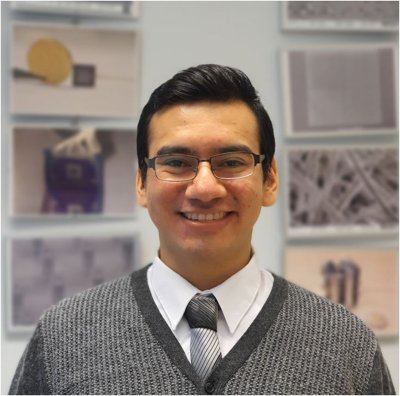Nanostructured (electro)catalysts with electrospinning
The PhD defence of Miguel Rodriguez Olguin will take place (partly) online and can be followed by a live stream.
Miguel Rodriguez Olguin is a PhD student in the research group Mesoscale Chemical Systems (MSC). Supervisor is prof.dr. J.G.E. Gardeniers and co-supervisor is dr. A. Susarrey Arce from the Faculty of Science & Technology (S&T).
 Electrospinning has gained attention as one of the principal synthesis methods used for the preparation of structured materials in fiber shape. Due to their versatility, organic and inorganic fibers can be produced depending on the chemicals used as precursors. The development of ceramic fiber materials for catalysis has gained attention due to the fiber network's hierarchical porosity. It has been demonstrated that hierarchical porosity helps to overcome the diffusive restrictions, which is appreciated in catalysis.
Electrospinning has gained attention as one of the principal synthesis methods used for the preparation of structured materials in fiber shape. Due to their versatility, organic and inorganic fibers can be produced depending on the chemicals used as precursors. The development of ceramic fiber materials for catalysis has gained attention due to the fiber network's hierarchical porosity. It has been demonstrated that hierarchical porosity helps to overcome the diffusive restrictions, which is appreciated in catalysis.
In this thesis, we present electrospinning as a synthetic approach tool for the development of catalysts for thermal and electrocatalysis. For thermal catalysis, first, we explored the production of alumina nanofibers (Chapter 2). Later, we modified the prepared alumina nanofibers with mordenite zeolite and tested its functionality for alcohol dehydration (Chapter 3). Lastly, alumina nanofibers containing palladium nanoparticles were produced and investigated during CO oxidation (Chapter 4). Exploiting electrospinning versatility for electrocatalytic applications, catalysts were prepared for the electroreduction of CO2. In this case, we first used electrospinning for the generation of NiO octahedra (Chapter 5). Next, we further explored the synthesis of NiO containing SnO2 in nanofiber shape (Chapter 6). The benefits of the octahedral and nanofiber shape were assessed. The thesis is concluded with a summary and outlook sections, in which potential future research and promising applications of electrospun nanoparticles and nanofibers in heterogeneous (electro)catalysis can be implemented (Chapter 7).
In the future, it is expected to produce catalysts with tailor-made shapes, e.g. by combining electrospinning with additive manufacturing (AM) techniques, to optimize chemical processes further.





